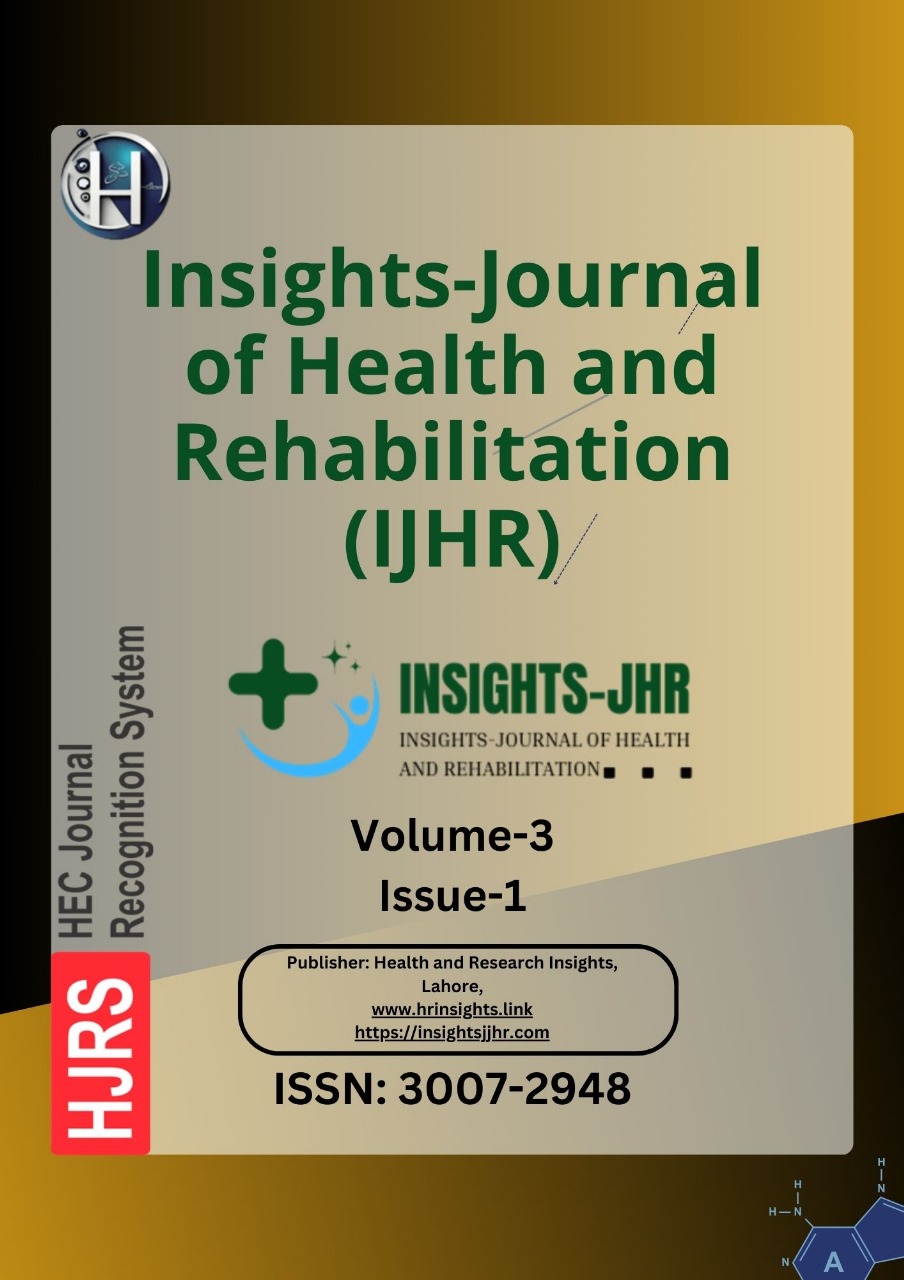AGE-RELATED EFFECTS OF DONOR ON CORNEAL TRANSPLANTATION AND CLINICAL STUDY OF CASUAL ALLOGRAFT REJECTION IN PAKISTAN
DOI:
https://doi.org/10.71000/wypqka87Keywords:
Allograft rejection, Corneal transplantation, Donor age, Graft survival, Pakistan, Postoperative care, Visual acuityAbstract
Background: Corneal transplantation is a widely used procedure to restore vision in patients with corneal blindness. Donor age is considered a critical factor influencing graft survival, visual acuity, and allograft rejection. However, the impact of donor age on corneal transplantation outcomes remains a subject of debate. This study aims to evaluate the effects of donor age on graft clarity, visual outcomes, and rejection rates in a Pakistani population, addressing gaps in regional transplantation practices and guiding future donor selection criteria.
Objective: The study investigates the relationship between donor age and transplantation outcomes, including graft clarity, visual acuity, and allograft rejection rates. It also identifies preoperative and postoperative predictors influencing graft survival.
Methods: A quantitative observational study was conducted from February 2013 to June 2016, involving 300 patients undergoing corneal transplantation at Saba Deseret Eye Hospital, Baffa, Pakistan. Corneas were procured from the Rawalpindi Eye Donor Organization and Shifa Eye Trust. An additional data collection phase was conducted from April 2024 to August 2024, analyzing 50 more patients at Mehboob Charity Vision International Eye and General Hospital, Mansehra, ensuring updated findings. Donor corneas were categorized into three age groups: <40 years (n=105), 40–60 years (n=120), and >60 years (n=75). Surgical techniques included Penetrating Keratoplasty (70%), Descemet's Stripping Endothelial Keratoplasty (20%), and Descemet Membrane Endothelial Keratoplasty (10%). Postoperative outcomes were assessed over 12 months. Statistical analysis was performed to evaluate the association between donor age and transplantation success.
Results: At one-year follow-up, graft clarity was observed in 80% of cases, with opacification in 20%. Visual acuity improved to 20/40 or better in 85% of patients. Graft rejection occurred in 15% of cases, with the highest rejection rate among recipients of corneas from younger donors (21%), followed by middle-aged donors (13%) and older donors (8%) (p=0.07). Long-term analysis showed higher graft survival rates in Descemet Membrane Endothelial Keratoplasty (92%) and Descemet's Stripping Endothelial Keratoplasty (89%) compared to Penetrating Keratoplasty (81%). The use of postoperative corticosteroids significantly reduced allograft rejection (p<0.01).
Conclusion: Donor age alone was not a significant predictor of graft failure, but younger donor corneas had higher rejection rates. Surgical technique and postoperative management played a more critical role in transplant success. These findings support refining donor selection criteria and enhancing postoperative care strategies to improve long-term corneal graft survival in Pakistan.
Downloads
Published
Issue
Section
License
Copyright (c) 2025 Muhammad Junaid, Azmat Kamran, 3. Suriyakala Perumal Chanan, 4. Irfan Ali (Author)

This work is licensed under a Creative Commons Attribution-NonCommercial-NoDerivatives 4.0 International License.







